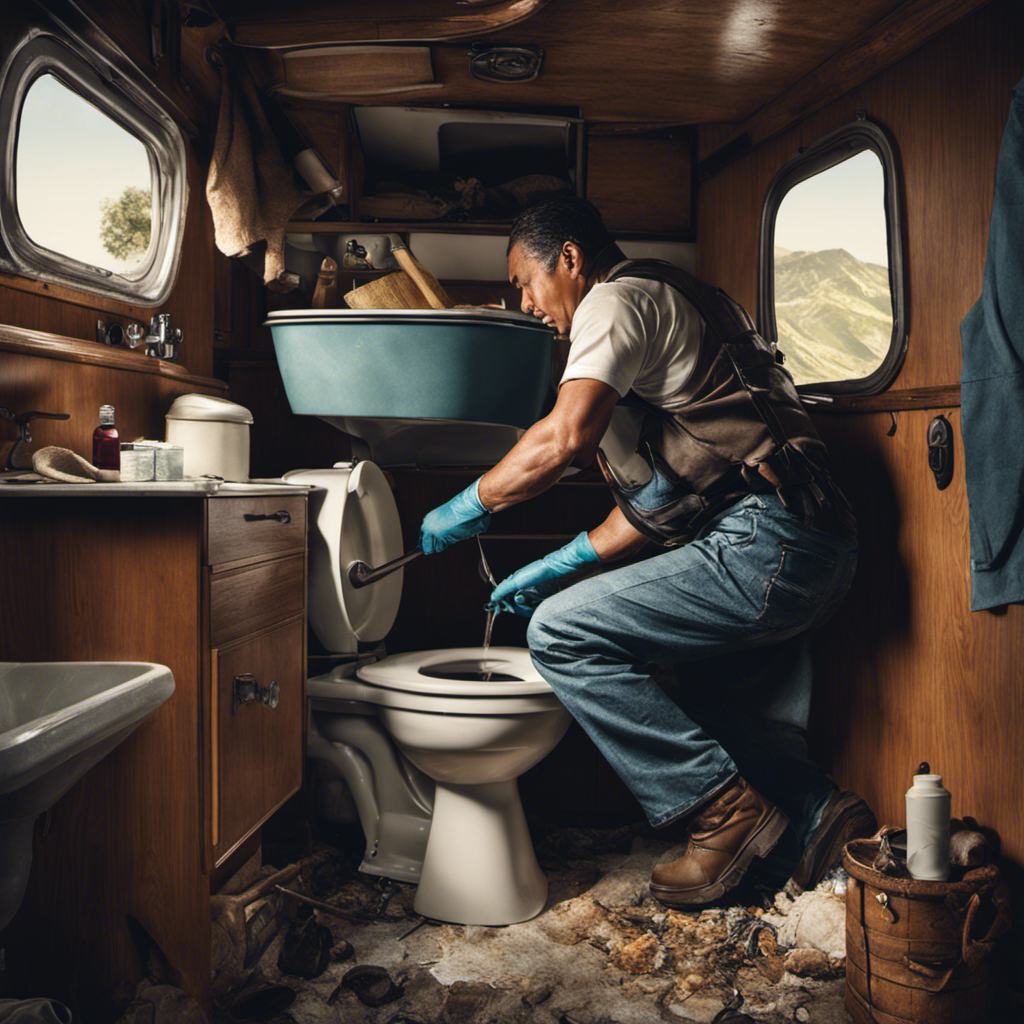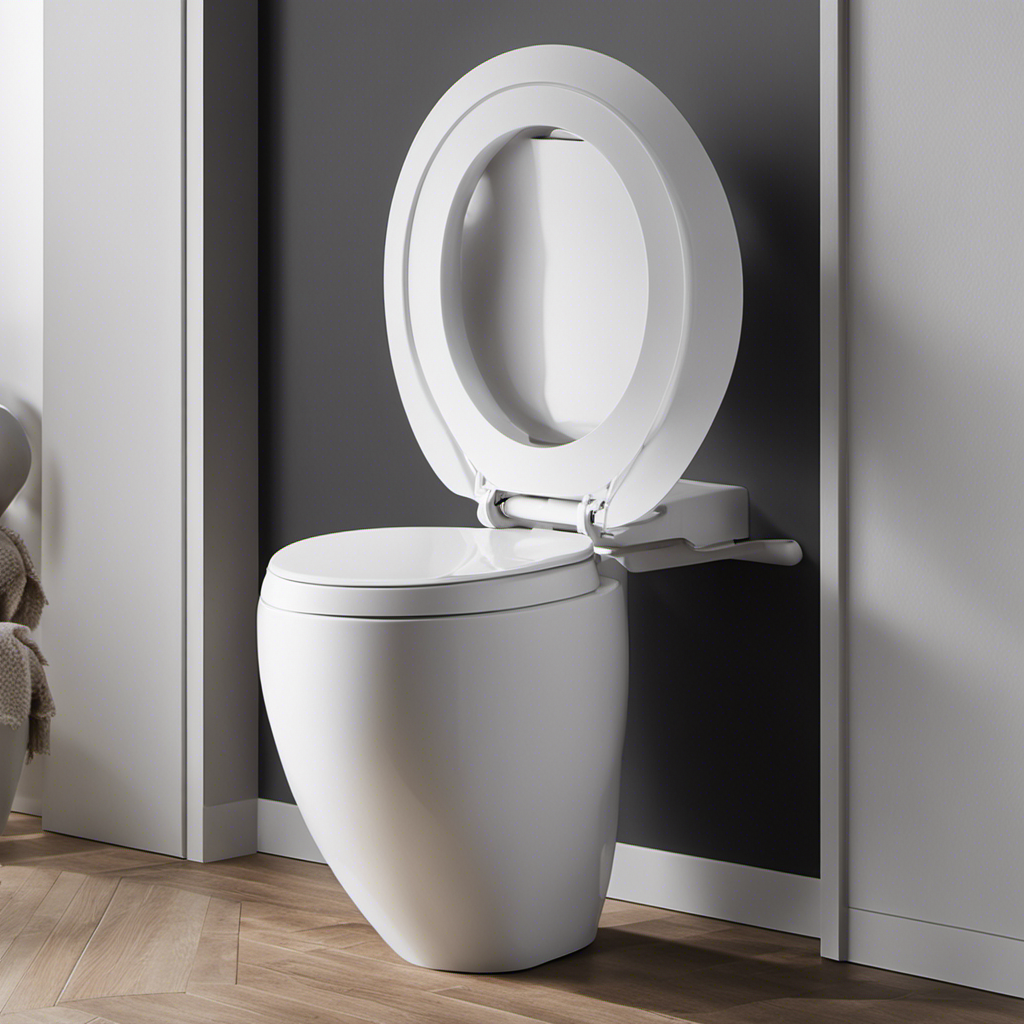We’ve all experienced it – finding ourselves in front of a toilet that stubbornly won’t flush, while paradoxically, it just keeps filling up with water. It’s an annoying and bewildering issue that has us puzzled and frustrated.
But fear not, dear reader, for we have the answers you seek. In this article, we will delve into the technical intricacies behind why your toilet won’t flush while still receiving a steady stream of water.
So, let’s unravel this mystery together and gain mastery over our plumbing woes.
Key Takeaways
- A malfunctioning flapper or fill valve can cause issues with flushing.
- Clogs or blockages in the drain or water supply line can prevent proper flushing.
- A faulty flush handle can hinder the flushing mechanism.
- Problems with the tank water level or flapper valve can affect flushing performance.
Problem With the Toilet Flapper
We might be experiencing a problem with the toilet flapper. The toilet flapper is a crucial component of the toilet tank that controls the flow of water during flushing. If the toilet isn’t flushing properly and continuously getting water, it could indicate a malfunctioning flapper.
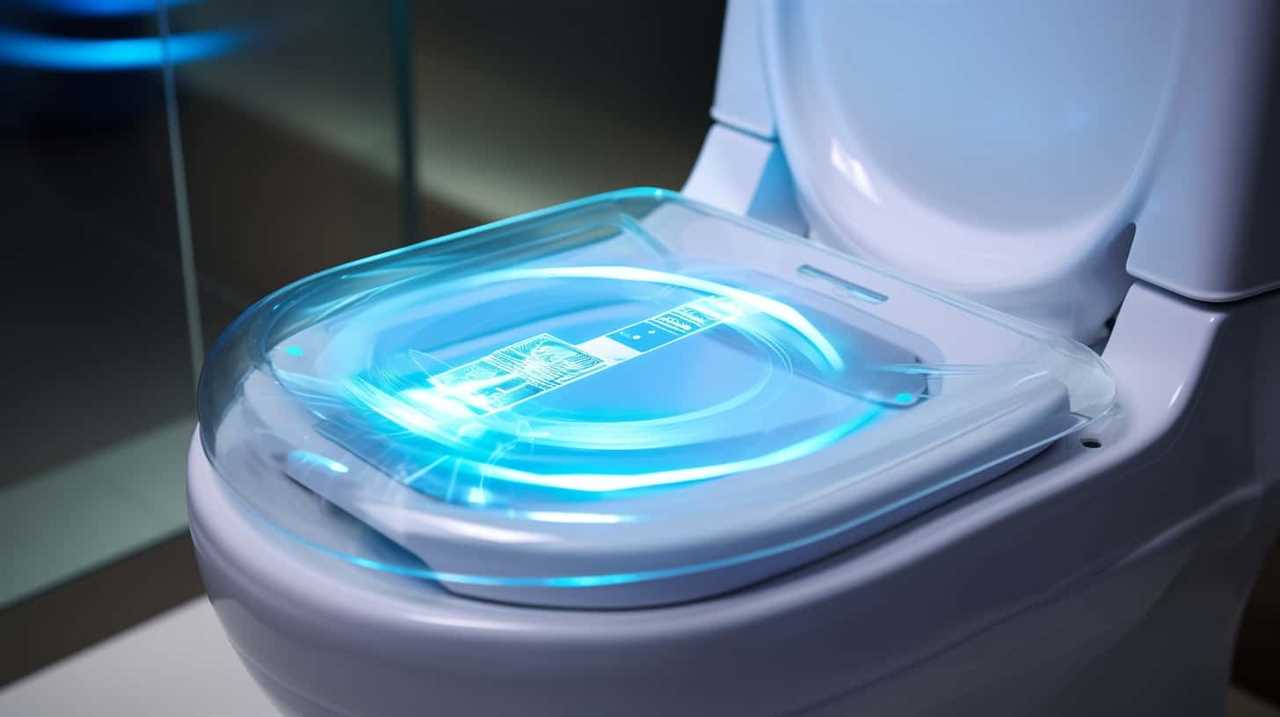
Troubleshooting the toilet flapper involves a few simple steps. First, check if the flapper is worn out or damaged. If so, a toilet flapper replacement is necessary. To replace the flapper, turn off the water supply, flush the toilet to drain the tank, and remove the old flapper by disconnecting it from the flush valve.
Install the new flapper by attaching it to the flush valve and reattach the chain. Finally, turn on the water supply and test the toilet for proper flushing.
Clogged or Blocked Toilet Drain
Moving on to the next issue, it’s possible that our toilet isn’t flushing properly due to a clog or blockage in the drain. When the drain is blocked, water can’t flow freely, leading to a weak or incomplete flush.
To resolve this problem, we can try using a toilet plunging technique. First, ensure there’s enough water in the bowl to cover the plunger. Place the plunger over the drain hole and firmly push down, creating a seal.
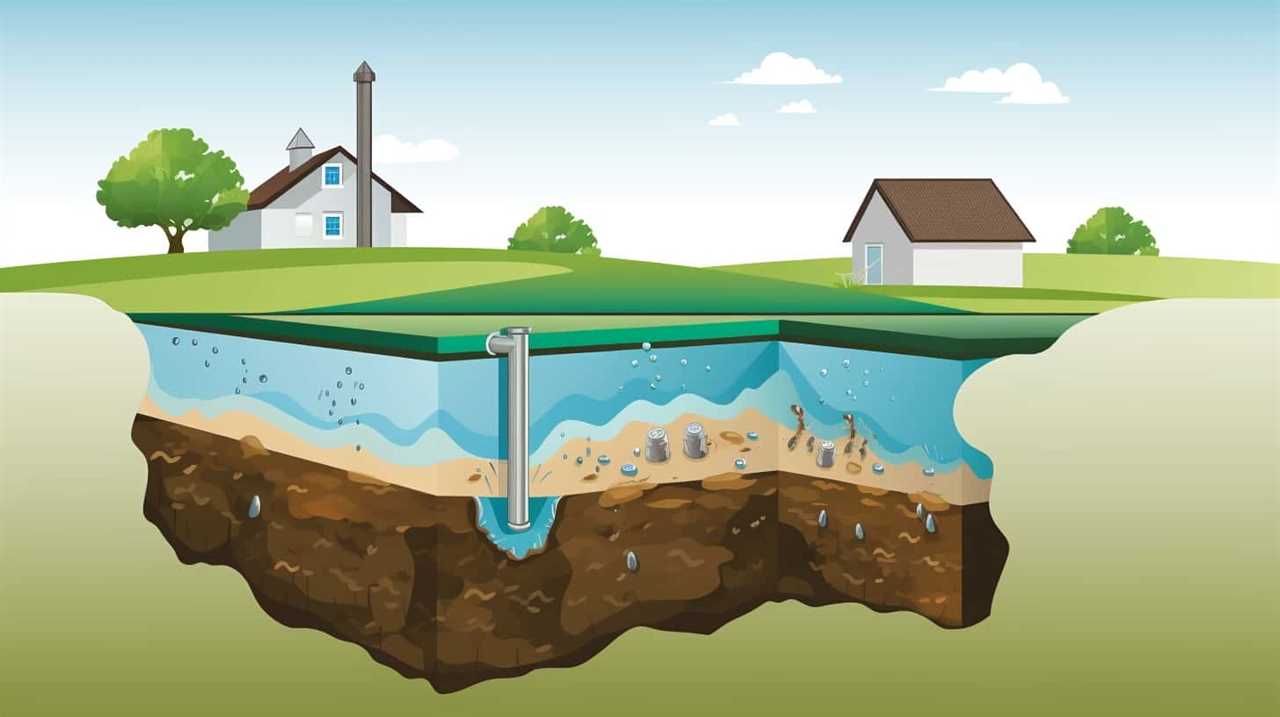
Next, vigorously plunge up and down for about 10 to 15 seconds. Repeat this process a few times, and then flush the toilet to check if the clog has been cleared.
If the clog persists, we may need to consider a DIY toilet drain unclogging method using a toilet auger or calling a professional plumber.
Malfunctioning Toilet Fill Valve
One possible cause for a toilet not flushing properly despite receiving continuous water is a malfunctioning toilet fill valve. The fill valve is responsible for regulating the water level in the toilet tank. When it malfunctions, it can lead to insufficient water entering the tank, resulting in a weak or incomplete flush.
Troubleshooting the toilet fill valve involves several steps:

- Check the water supply: Ensure that the water supply to the toilet is fully open and providing adequate pressure.
- Inspect the fill valve: Look for any visible signs of damage or wear, such as leaks or cracks. If found, a toilet fill valve replacement may be necessary.
- Adjust the fill valve: Some fill valves have adjustable settings that allow you to increase the water level in the tank. Use the manufacturer’s instructions to make any necessary adjustments.
Issues With the Water Supply Line
To continue troubleshooting the issue of a toilet not flushing properly despite receiving continuous water, let’s now address the potential problems with the water supply line. The water supply line is responsible for delivering water to the toilet tank, ensuring proper flushing performance. Two common issues that can arise with the water supply line are low water pressure and a water shut-off valve that is not fully open. Low water pressure can impede the flushing process, as it may not provide enough force to effectively remove waste from the bowl. On the other hand, if the water shut-off valve is not fully open, it can limit the amount of water entering the toilet tank, resulting in a weak flush. Checking the water pressure and ensuring the water shut-off valve is fully open are crucial troubleshooting steps to resolve toilet flushing issues.
| Potential Problems with the Water Supply Line | Troubleshooting Steps |
|---|---|
| Low water pressure | – Check water pressure at other fixtures – Contact a plumber if pressure is consistently low |
| Water shut-off valve not fully open | – Locate the water shut-off valve – Ensure it is fully open – Turn the valve counterclockwise to open it completely |
With the water supply line issues addressed, let’s now move on to discussing the potential problems with a faulty toilet flush handle.
Faulty Toilet Flush Handle
Now, let’s examine the frequency of occurrence and potential issues with a faulty toilet flush handle. A faulty flush handle is a common problem that can prevent the toilet from flushing properly.
Here are some potential issues associated with a faulty toilet flush handle:
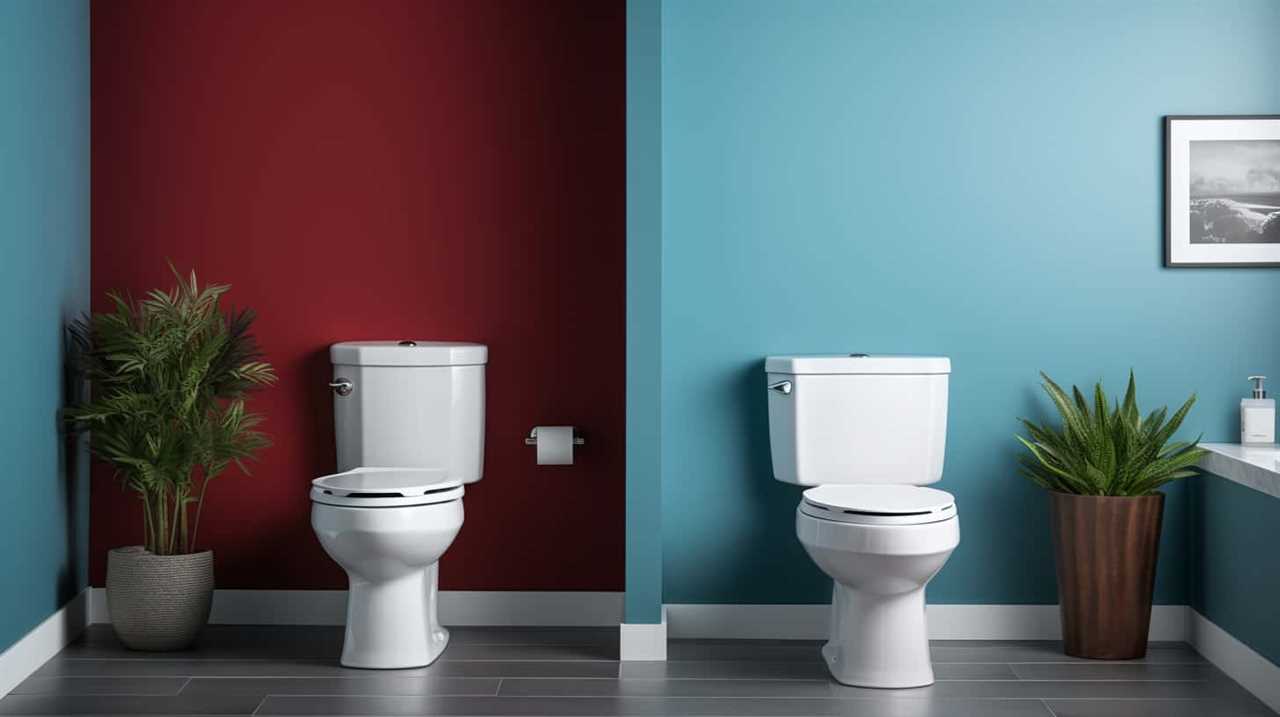
- Misalignment: The flush handle may become misaligned, causing it to not engage with the flushing mechanism in the toilet tank properly. This can result in a weak or incomplete flush.
- Loose or broken handle: The handle itself may be loose or broken, making it difficult to actuate the flushing mechanism. This can lead to a lack of flushing power or no flushing at all.
- Corrosion: Over time, the flush handle and its components may corrode, hindering its ability to function effectively. This can result in difficulties in flushing the toilet bowl.
Addressing these issues requires inspecting and potentially adjusting or replacing the faulty flush handle to ensure proper flushing of the toilet.
Frequently Asked Questions
How Do I Know if My Toilet Flapper Is the Problem?
To determine if the toilet flapper is the issue, check for water leaks around the base of the toilet. If there are no leaks, try troubleshooting the flapper by inspecting it for cracks or damage. Consider toilet flapper replacement if necessary.
What Are Some Common Causes of a Clogged or Blocked Toilet Drain?
Toilet drain maintenance is crucial for preventing clogs. Common causes include excessive toilet paper, foreign objects, or a buildup of waste. Regularly inspecting and cleaning the drain can help avoid this inconvenience.
How Can I Tell if My Toilet Fill Valve Is Malfunctioning?
When troubleshooting a malfunctioning toilet fill valve, it is important to check for common issues such as leaks, water pressure, and debris. If necessary, a toilet fill valve replacement may be required.
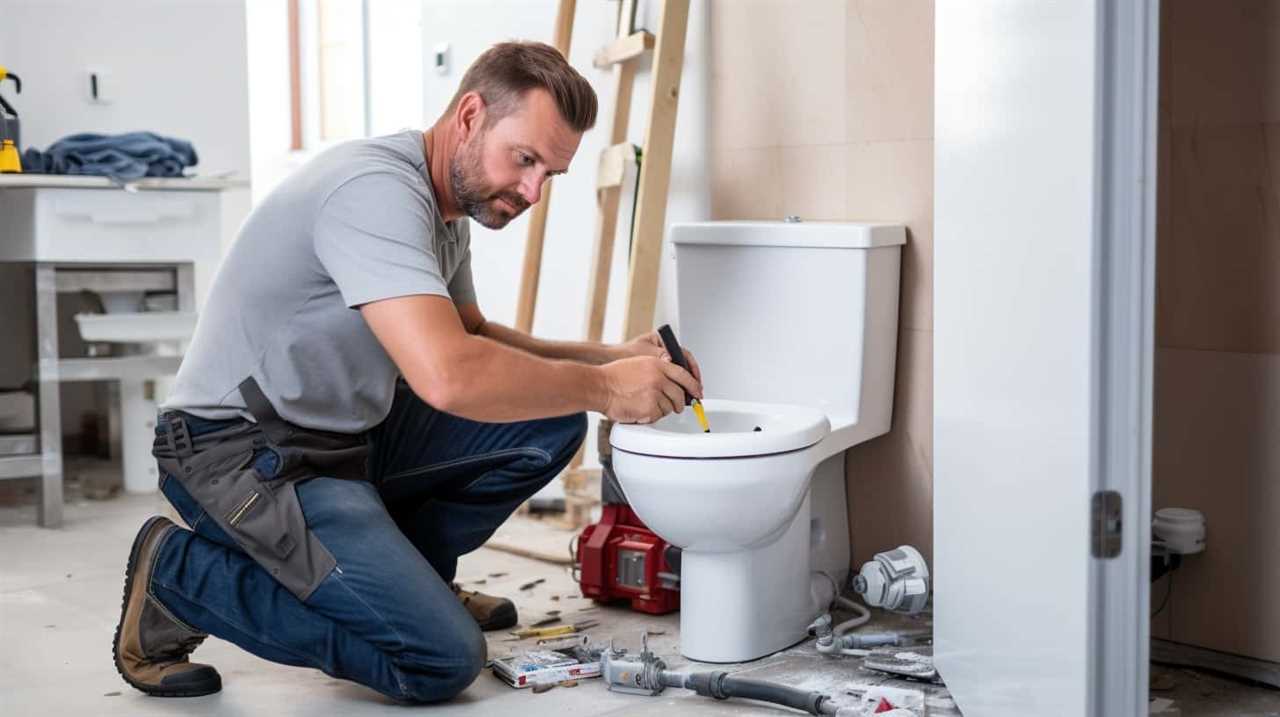
What Are Some Common Issues With the Water Supply Line That May Affect Toilet Flushing?
Toilet tank leakage and water pressure issues are common culprits that can affect toilet flushing. These problems can prevent proper water flow, resulting in the inability to flush the toilet despite continuous water supply.
How Can I Fix a Faulty Toilet Flush Handle?
To fix a faulty toilet flush handle, first, identify the problem. Common issues include a loose or broken lever. Disconnect the old lever and replace it with a new one, ensuring it is properly aligned and secured. Test the flush to ensure it functions correctly.
Conclusion
In conclusion, there could be several reasons why you can’t flush your toilet despite the continuous water supply.
It could be due to a problem with the toilet flapper, a clogged or blocked toilet drain, a malfunctioning toilet fill valve, issues with the water supply line, or a faulty toilet flush handle.
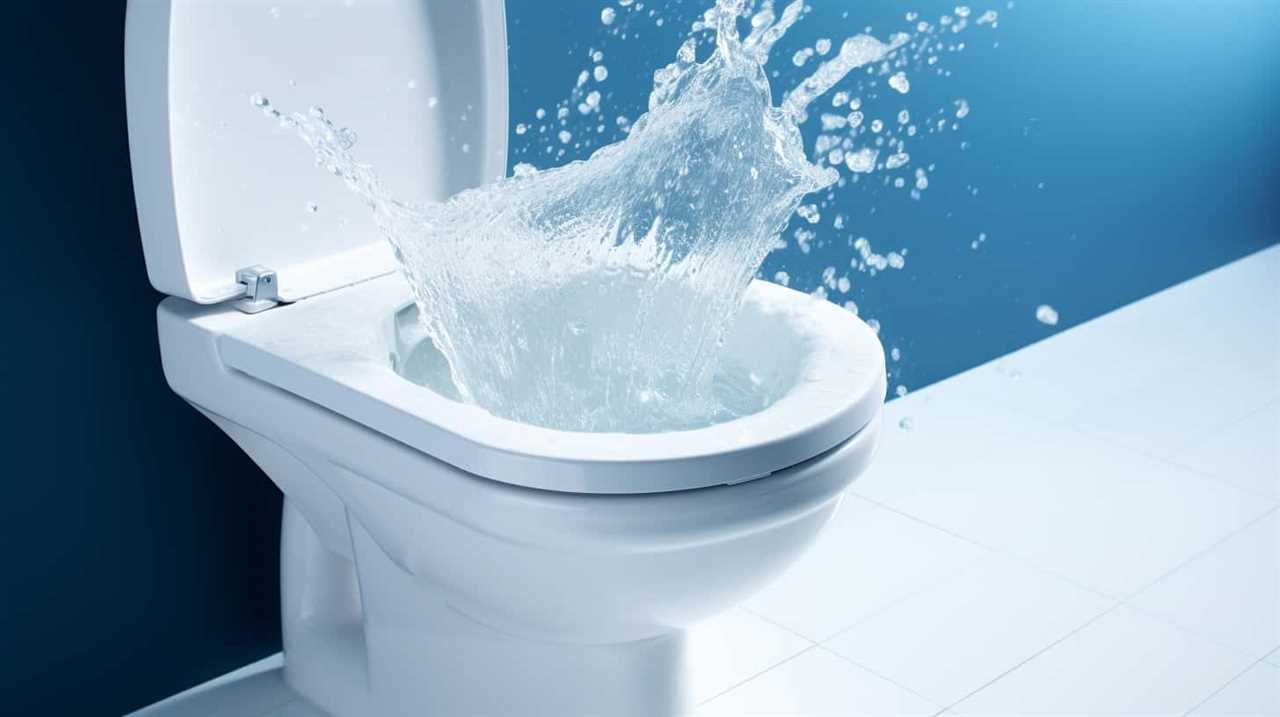
By identifying the specific issue and addressing it accordingly, you can restore the proper functioning of your toilet.
So, why wait? Take action and enjoy a fully functional toilet once again.





